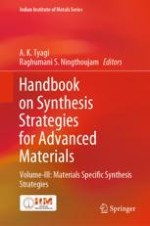This book presents state-of-the-art coverage of synthesis of advanced functional materials. Unconventional synthetic routes play an important role in the synthesis of advanced materials as many new materials are metastable and cannot be synthesized by conventional methods. This book presents various synthesis methods such as conventional solid-state method, combustion method, a range of soft chemical methods, template synthesis, molecular precursor method, microwave synthesis, sono-chemical method and high-pressure synthesis. It provides a comprehensive overview of synthesis methods and covers a variety of materials, including ceramics, films, glass, carbon-based, and metallic materials. Many techniques for processing and surface functionalization are also discussed. Several engineering aspects of materials synthesis are also included. The contents of this book are useful for researchers and professionals working in the areas of materials and chemistry.
